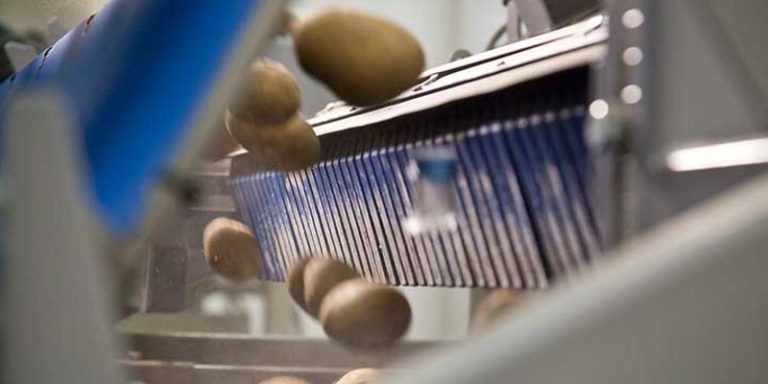A growing global population is creating new challenges around boosting efficiency in the production of food.
By Ashley Hunter, senior vice president and head of Tomra Sorting Solutions, Food
The global population has been expanding rapidly for many years, standing at around 7.3bn in 2016, due to a number of factors, such as advanced maternity and
healthcare. However, the rise brings with it several challenges around global sustainability, including the need for more food. As an essential resource, the supply of food is a major concern in all countries. As with any resource, however, bringing food to market is dependent on growers, suppliers and distributors.
Exponential Growth
According to the United Nation’s Food and Agricultural Organization (FAO), the global population is expected to increase by around 2.3bn people between now and 2050. Although this is a slower rate of growth than the one seen over the past 40 years, it still represents a 30% increase in the number of people who will need feeding. At the same time, the amount of food that will need to be processed will rise by almost 70% – rising to 100% in the developing world – which will mean an increased supply of several products to help cope with the demand.
Earnings in developing countries are also expected to rise along with the population growth, and even exceed so-called ‘economic poverty’ levels, with the market demand for food continuing to grow as a consequence. Annual production of cereal will need to grow by almost one billion tons and meat production by over 200m tons, to a total of 47mn tons by 2050, with 72% of this taking place in developing countries, up from 58% today.
Additional Factors
The Population Institute estimates that a 70% increase in food production will also have to take into account increases in energy prices, as well as factors such as groundwater depletion, the loss of farmland to urbanization, and potential flooding and droughts caused by climate change. This rapid increase and the associated challenges will place additional strains on food production. The cost of doubling production in the developing world alone will require an investment of almost USD100bn per year, not including any infrastructure that will be required to implement and support it. A further problem will be increasing agricultural activity, even though governments around the world are trying to reduce global greenhouse gas emissions, something the production and distribution of food have significantly contributed to in the past.
Multiple Challenges
A multi-targeted approach will be required to help overcome the many challenges. This will include looking at how new approaches to food production and changes to the supply chain can boost efficiency. The FAO believes there is potential to increase crop yields, with technology playing a major role in helping to boost production efficiency. The organization believes that having social and economic incentives in place will create more certainty in terms of actual yield volumes and production capacity. Fears over a flattening-out of yield volumes may be misplaced.
